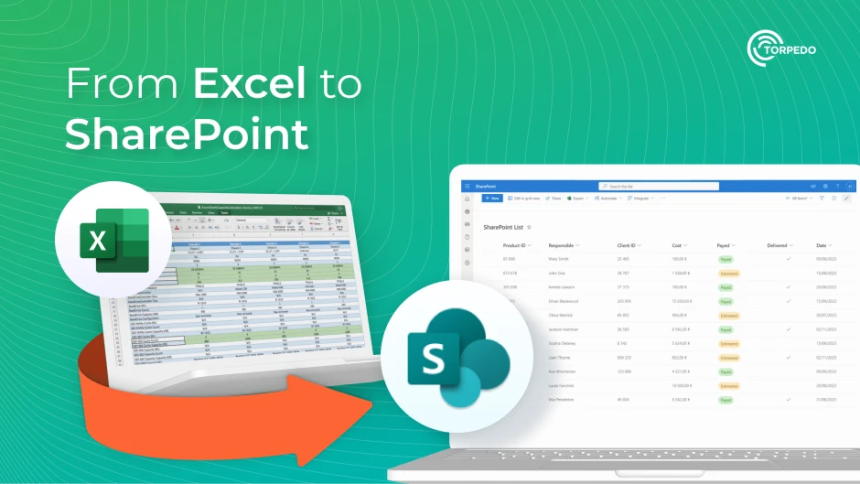
Critical Risks of Excessive Spreadsheet Linking in Excel
Critical Risks of Excessive Spreadsheet Linking in Excel – And How to Avoid Them
Microsoft Excel remains a cornerstone of data handling in many business environments. However, when spreadsheets become overly complex through excessive interlinking, the result can be system instability, silent data errors, and long-term maintainability issues. This guide provides a clear overview of the pitfalls associated with excessive spreadsheet linking, and offers professional best practices to ensure data reliability, operational efficiency, and legal compliance—especially when handling sensitive information.
The Pitfalls of Excessive Spreadsheet LinkingDirectory and Filename Dependencies
Linking multiple workbooks often depends on fixed directory paths and filenames. When a file is renamed, moved, or deleted, links break. These disruptions commonly result in #REF! errors or misreported values—especially dangerous when Excel quietly retains outdated figures without issuing alerts.
Even minor changes to the directory structure or file names can render master tables inoperable, significantly impacting business reporting and decision-making.
Undetectable Errors and Data Inaccuracy
Not all broken links in Excel cause visible errors. In many cases, Excel continues to display old data, giving users a false sense of accuracy. Since there's no indication of outdated or broken references, key decisions could be made using invalid information.
Performance Challenges with Overlinked or Oversized WorkbooksSystem Resource Overload
Large Excel files with multiple interdependencies consume significant CPU and memory resources. Users may experience application freezes, long load times, or unexpected crashes during operations like opening, saving, or recalculating formulas.
Risk of Files Becoming Inoperable
When links span too many sheets or external files, workbooks become cumbersome and nearly unusable. Even minor tasks can take several minutes to execute. This not only slows down productivity but increases the likelihood of data corruption.
Unsupported Custom Formulas and Team Dependency Risks
Users frequently build personalized formulas and linking structures without consulting IT or documenting their methods. These custom solutions may work short-term but are unsupported by IT and difficult to troubleshoot when errors occur—especially when the original creator is unavailable.
Organizations must understand that IT support cannot extend to undocumented, non-standard formulas.
Essential Best Practices for Spreadsheet LinkingLimit External Links
- Only link spreadsheets when essential for data integration.
- Favor internal sheet references within the same workbook over external links.
- Avoid circular references that complicate update cycles.
Manage File Sizes Appropriately
- Segment large spreadsheets into thematic or departmental files.
- Use Excel’s Power Query for data aggregation instead of complex link chains.
- Archive legacy data to reduce active file load.
Implement Cell Locking and Protection
- Lock formula cells using Excel’s Format Cells → Protection settings.
- Enable sheet protection to prevent accidental edits by colleagues.
- Restrict editing to specific cells where user input is necessary.
Enforce Password Protection for Sensitive Data
- Apply password protection to view or edit any workbook containing personal, financial, or confidential data.
- This ensures compliance with data protection laws and prevents unauthorized access.
The Role of a Data Resource Manager
A Data Resource Manager is vital to maintaining structured, secure, and efficient Excel systems within a department. This role includes:
- Designing all linking strategies between workbooks.
- Maintaining detailed logs of all modifications, including timestamps and responsible personnel.
- Running frequent link audits to verify the accuracy and freshness of data reflected in master sheets.
- Ensuring all spreadsheets follow organizational and IT standards.
Link Testing Protocol
Regular link testing should include:
- Checking each source file for availability and accuracy.
- Confirming updates reflect real-time data changes.
- Verifying that no formula errors or stale values are present.
This proactive monitoring ensures that business-critical dashboards or summaries provide a reliable foundation for strategic decisions.
Why SharePoint and OneDrive Offer Superior Solutions
Traditional file shares or local drive dependencies often lead to broken paths and access issues. Migrating to cloud-based solutions like SharePoint or OneDrive offers significant advantages:
- Persistent file paths: Cloud links do not break due to device-specific directories.
- Version control: Access historical versions of workbooks.
- Real-time collaboration: Users can work together simultaneously on the same document.
- Centralized permissions: IT can manage access securely without sharing folders.
These platforms support Excel Desktop integration, enabling efficient team workflows while maintaining document integrity.
Legal Compliance: Protecting Sensitive Data in Spreadsheets
When Excel is used to store or process personal or financial data, organizations must comply with data protection laws. Key legislation includes:
GDPR (General Data Protection Regulation)
Applies to all businesses processing EU citizens’ data, and retained in UK law post-Brexit. Key articles:
- Article 5(1)(f): Mandates protection against unauthorized access or processing.
- Article 32: Requires technical and organizational measures to ensure appropriate security.
UK Data Protection Act 2018
- Enforces GDPR standards domestically.
- Schedule 1, Part 4: Requires safeguards when processing sensitive personal data.
- Organizations must maintain transparency and document all data-handling processes.
Failure to comply can result in fines and reputational damage. Excel files should therefore be treated with the same security as any other data system.




